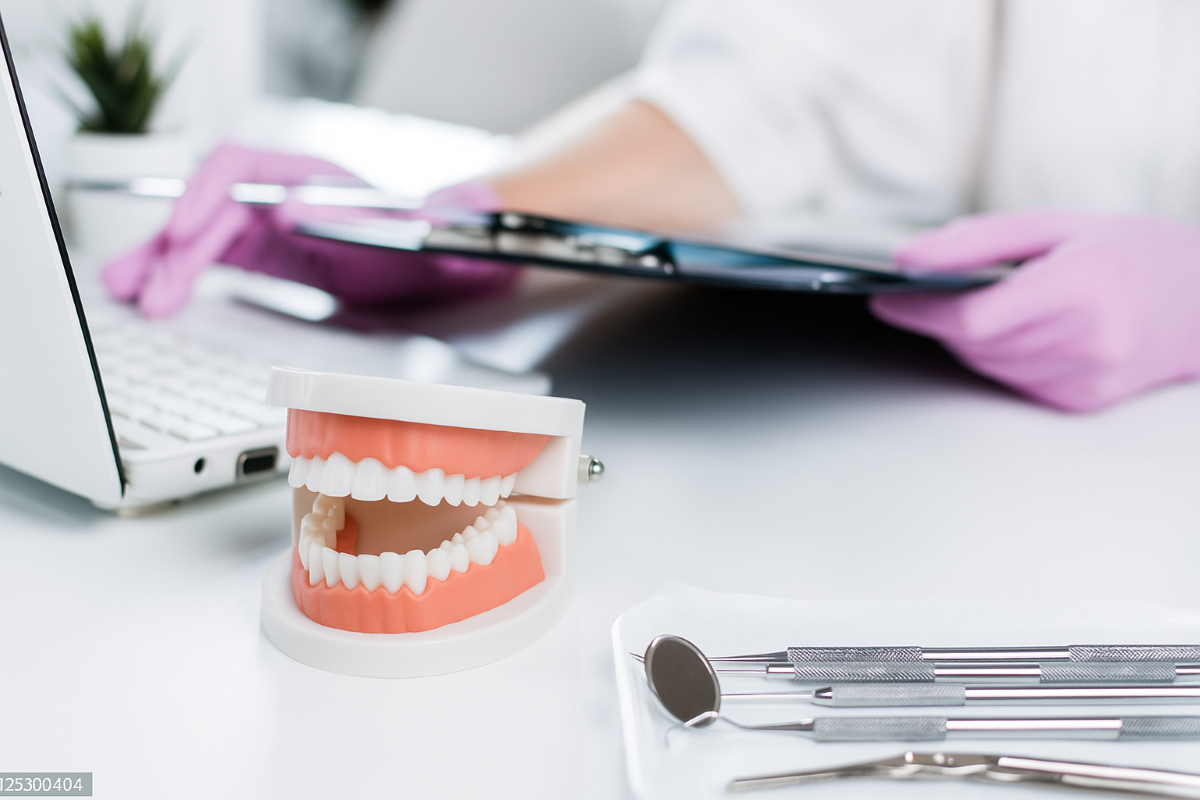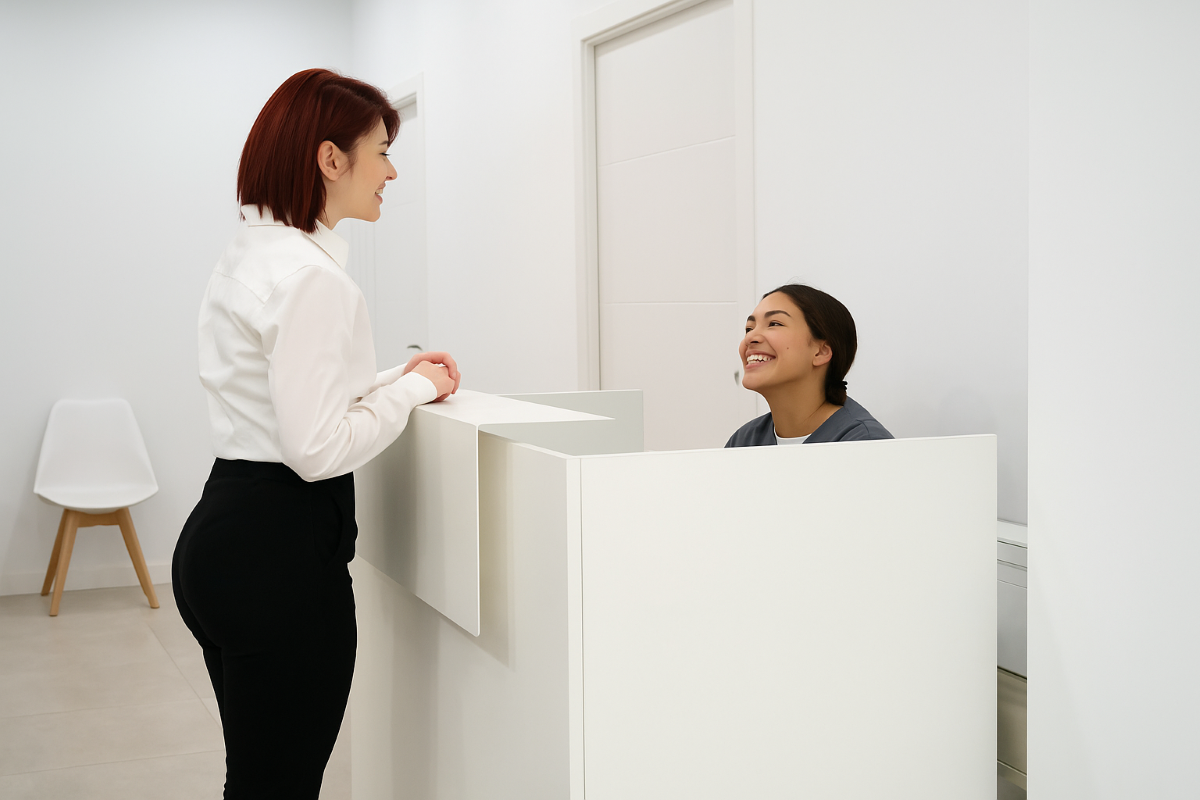Key Highlights
Dental no-shows equate to lost revenue for your practice.
Automated systems help reduce wait times and improve scheduling efficiency.
Appointment reminders help mitigate last-minute cancellations.
Online scheduling puts patients in control of their dental care.
Effective communication with patients is crucial for appointment adherence.
Introduction
In today’s busy healthcare world, good communication is key to making sure patients have a positive experience and that the dental office runs smoothly. A big part of this is handling appointments well. This guide looks at the problem of dental office no-shows. It offers tips and ideas to reduce these no-shows and create a smooth experience for patients and staff.
Understanding Dental Office No-Shows
In the busy pace of daily life, patients sometimes miss their appointments. While this can happen now and then, frequent no-shows at your dental office can mess up your schedule and affect your earnings. Instead of thinking these missed visits are just part of life, see them as a chance to grow.
Figuring out why patients don't show up can give you important clues on how to improve your communication and service. By dealing with the main reasons for no-shows, you can build a more effective and patient-friendly experience.
Definition and Impact on Practices
A dental office no-show means a patient missed their appointment without giving enough notice, usually less than 24 hours. These missed appointments hurt the practice financially. They cause lost income and lower practice efficiency.
When a patient doesn’t show up, that is time that could have been spent caring for other patients who need treatment. It also disrupts the schedule and can cause delays for those who did arrive on time for their dental appointments.
To reduce these issues, it’s important to know the common reasons why patients miss their appointments. This understanding can help you create effective strategies to lessen no-shows.
Common Reasons for Patient Absences
Patients often miss their scheduled appointments for different reasons. Sometimes they forget, face a last-minute emergency, or have a scheduling conflict. Other times, they might feel fear or anxiety about going to the dentist.
Unexpected life events also lead to last-minute patient cancellations. For example, a sick child or an urgent meeting can take priority over a regular dental cleaning.
No matter the reason, knowing the common factors that lead to missed appointments gives us a chance to create better strategies. This can help improve patient communication and lower no-show rates.
Preparing to Reduce No-Shows
Before you start using strategies and tools to reduce no-shows in your dental office, you need to prepare first. This means taking a proactive approach to appointment management and providing your office with the right resources.
By spending on the right tools, setting up clear communication channels, and creating a patient-focused culture, you can greatly boost patient engagement. This will help lessen the chances of missed dental appointments.
Essential Tools and Resources Needed
Having the right digital setup can help keep appointments and improve workflows in your office. There are many practice management software options available today. These tools have different features to help make your work easier.
Appointment reminders are very important for reducing no-shows. Sending automated reminders through email, text, or phone call helps patients remember their appointments. This increases the chances that they will show up. A system that lets you send personalized messages using their preferred communication channels can make reminders even more effective.
When you pick practice management software, choose ones that work well with your current systems and offer different communication channels and detailed reports. By getting the right tools for your practice, you can manage appointments better, decrease no-shows, and improve overall practice efficiency.
Setting Up the Right Communication Channels
Effective communication is very important for a successful dental practice. To reduce no-shows, you need clear and easy ways for patients to talk to you. While phone calls are a good option, try other choices that might work better for your patients, like emails and text messages.
Giving patients different ways to contact your practice lets them choose how they want to interact. For instance, a quick text reminder might work better for a busy person than a phone call.
The main goal is to make it simple for patients to reach out. By offering various communication channels, you show that you care about their convenience and improve their overall experience.
Step-by-Step Guide to Minimizing No-Shows
Reducing patient no-shows needs different ways to tackle the problem. It's not just about using good digital tools and communication. You also need to build a patient-focused culture in your practice.
By being active and caring, you can create a friendly and helpful space. This encourages patients to see dental visits as important.
Step 1: Implement an Automated Reminder System
Automated appointment reminders are very important. They help reduce no-shows and create a good patient experience. These systems send notifications to patients about their upcoming visits. They remind patients to confirm their appointments or reschedule if needed.
What is great about automated reminders is that they can be personalized. They adjust messages based on what the patient likes and the type of appointment. This makes it more likely for patients to notice the messages and respond.
Also, if you connect these reminders to your scheduling software, patients will get notifications at the right times. This takes into account how far in advance their appointments are and how they prefer to communicate.
Step 2: Create a Clear Cancellation Policy
Automated reminders help cut down on no-shows, but it’s also very important to have clear rules about cancellations and rescheduling. A clear cancellation policy shows patients what to expect. It also helps your practice avoid losing money from last-minute cancellations or missed appointments.
Make sure your cancellation policy is easy to understand and is available for patients to see. You can include it on your website, in appointment confirmation emails, and on printed materials in your office.
Also, double-check that your cancellation policy follows state laws about patient cancellations.
Step 3: Offer Flexible Scheduling Options
In today’s busy world, making things easy for patients is very important. Flexible scheduling shows that you care about their lives and can help lower the number of missed appointments. Think about using online scheduling so patients can book their own appointments anytime, day or night.
Online scheduling lets patients see available times, pick what works best for them, and even change appointments without needing to call during office hours.
By simplifying appointment management, you help patients take charge of their dental care. This can lead to fewer missed appointments.
Step 4: Engage Patients Through Personalized Messages
Building strong relationships with patients is key for a successful practice. A good way to build trust and encourage people to engage is through personalized communication. When you customize your messages to meet each patient’s needs and likes, it shows you care and makes the bond between you and the patient stronger.
Think about adding personal touches to your messages. For example, you can send birthday wishes, recognize important appointment dates, or call patients by their preferred names. These small gestures can create a feeling of connection and loyalty.
When you take the time to personalize your interactions with patients, you create a friendly environment. This encourages open communication and highlights the importance of regular dental visits.
Leveraging Technology to Prevent No-Shows
Technology provides many tools to help you prevent no-shows besides the basic steps mentioned earlier. For example, modern online scheduling systems and mobile apps can change how you handle appointments and communicate with patients.
Using new dental technologies can make communication easier. They can also simplify scheduling and keep patients engaged. This can greatly improve their overall experience and reduce the number of missed appointments.
Benefits of Using Online Scheduling Systems
Online scheduling systems have changed how dental offices handle appointments. These systems make it easy for patients to book appointments online when they want, so there is no need to call during office hours.
They work well with your current practice management systems. Online scheduling shows real-time appointment availability, sends automatic reminders, and lets patients fill out intake forms online. This makes the work easier for both you and your patients.
By using online scheduling, you boost patient satisfaction. You also allow your staff to spend more time giving great care.
How Mobile Apps Can Enhance Patient Commitment
Mobile apps are now a part of our daily lives, including in dentistry. Dental offices can use mobile apps to boost patient engagement and make the treatment experience more fun.
Think about a mobile app that allows patients to book their appointments, view their dental records, communicate with your office, and even handle payments right from their phones. Also, adding loyalty rewards or game-like features to the app can encourage patients to take care of their oral health and keep their appointment commitments.
Mobile apps create a direct and personal way to connect with patients. This helps them feel loyal to your practice and motivates them to focus on their oral health.
Conclusion
In conclusion, to reduce no-shows in a dental office, it is important to use smart strategies. This includes automated reminders, clear rules for cancellations, and connecting with patients on a personal level. By using technology, like online scheduling systems and mobile apps, dental offices can help patients stay committed and lower the number of missed appointments. These actions not only make the office run better but also keep patients happier and coming back. Regular communication and good tools are essential to handle the issues that no-shows create, making the practice work more smoothly and successfully.
Frequently Asked Questions
What are the best practices for reminder frequencies to reduce no-shows?
Many dental offices use effective strategies to keep appointment attendance rates high for dental visits. They send appointment confirmations one week before the visit. They also remind patients two days before and again 24 hours before the appointment.




